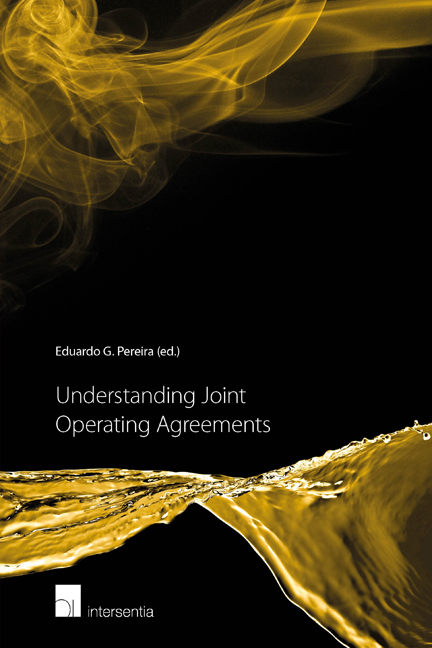Book contents
- Frontmatter
- Contents
- List of Abbreviations
- List of Authors
- Introduction
- PART I CONSIDERATIONS PRIOR TO ENTERING INTO A JOA
- 1 Bribery Laws and Compliance
- 2 The Relationship with Other Joint Venture Agreements
- 3 Unitisation and Unit Operating Agreements
- 4 Key Issues Relating to JOAs in Civil Law Countries
- 5 The Relationship between a JOA and a Host Government Instrument
- 6 Decommissioning Obligations, Practices and Procedures
- 7 Standards and Practices in JOAs across the Petroleum Industry
- 8 Modifying the Standard JOA to Accommodate Unconventional Petroleum Projects
- PART II SETTING UP A JOA
8 - Modifying the Standard JOA to Accommodate Unconventional Petroleum Projects
from PART I - CONSIDERATIONS PRIOR TO ENTERING INTO A JOA
Published online by Cambridge University Press: 15 December 2017
- Frontmatter
- Contents
- List of Abbreviations
- List of Authors
- Introduction
- PART I CONSIDERATIONS PRIOR TO ENTERING INTO A JOA
- 1 Bribery Laws and Compliance
- 2 The Relationship with Other Joint Venture Agreements
- 3 Unitisation and Unit Operating Agreements
- 4 Key Issues Relating to JOAs in Civil Law Countries
- 5 The Relationship between a JOA and a Host Government Instrument
- 6 Decommissioning Obligations, Practices and Procedures
- 7 Standards and Practices in JOAs across the Petroleum Industry
- 8 Modifying the Standard JOA to Accommodate Unconventional Petroleum Projects
- PART II SETTING UP A JOA
Summary
This chapter examines how a conventional JOA will need to be modified to reflect the nuances of an unconventional petroleum project. A JOA that is to be applied to the management of such a project will require modification in a number of ways. In 2014 a JOA specifically tailored to unconventional petroleum operations was issued by the AIPN.
‘Unconventional’ petroleum is any petroleum deposit which is developed through anything other than conventional means (that is, essentially, vertical and horizontal drilling). This includes any of shale oil and shale gas (where oil or gas is fixed within relatively fissile shale rock strata, requiring hydraulic fractionation (or fracking) for its liberation), coal bed methane (also called coal seam gas, which is methane adsorbed onto the surface of coal deposits), tight gas (gas which is trapped within rock formations of such low permeability that fracking is essential) and hydrates (gas trapped within ice-like crystalline water structures).
The focus of this chapter is principally on the structuring of a JOA for the development of onshore shale deposits, although many of the points made here will be of general application to any unconventional petroleum deposit (and particularly one where fracking is a necessity).
UNDERSTANDING THE OPERATIONAL PREMISE
An unconventional petroleum project will differ from its conventional project cousin in a number of ways.
A conventional petroleum development project is commonly represented by the drilling of a single exploration well (typically drilled vertically, albeit with the possibility of lateral (horizontal) deviations) that (if successful) is then appraised and is worked over to become a development lead, and then a production well. Once petroleum production is underway inherent capillary pressure within the target petroleum reservoir will lead to the free flow of petroleum from the wellbore, and petroleum flow rates from that well will ordinarily be characterised by a steady ramp-up and a smooth plateau production profile, before an eventual decline phase and the permanent cessation of production.
- Type
- Chapter
- Information
- Understanding Joint Operating Agreements , pp. 145 - 156Publisher: IntersentiaPrint publication year: 2016



